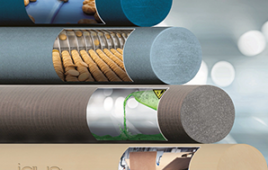Using metamaterials, scientists have designed and built the world’s first semiconductor-free, optically-controlled microelectronic device.
The new device is 1,000 percent more conductive and boasts a much smaller band gap, meaning its conductivity can be triggered by a very low voltage and laser pulse.
Technology wouldn’t be what it is today without semiconductors. But like most materials, the benefits of semiconductors are accompanied by constraints.
Semiconductors put up varying levels of resistance, which constrains electron velocity. Also, their relatively large band gaps require initial bolts of energy to trigger conductivity.
For some microelectronic components, like transistors, these pitfalls are especially problematic.
In large electronic devices with sizable semiconductor components, large jolts of energy, strong laser pulses or high temperatures can lessen these impediments and get electrons flowing freely. But these strategies don’t work in smaller components.
Scientists at the University of California, San Diego sidestepped these problems by abandoning semiconductor materials in favor of metamaterials. The metamaterial is empowered by a metasurface, gold mushroom-like nanostructures etched onto an array of parallel gold strips. The metasurface is affixed to a silicon wafer, buffered by a layer of silicon dioxide.
When a small amount of power — less than 10 volts — and a low-power infrared laser are applied to the metasurface, the gold nanostructures generate “hot spots,” intense electric fields strong enough to decouple electrons from the material. The electrons are pulled from the underlying material and allowed to move uninhibited.
“This certainly won’t replace all semiconductor devices, but it may be the best approach for certain specialty applications, such as very high frequencies or high power devices,” electrical engineering professor Dan Sievenpiper said in a news release.
Researchers described their breakthrough device in a new paper published this week in the journal Nature Communications.
“Next we need to understand how far these devices can be scaled and the limits of their performance,” Sievenpiper concluded.
Filed Under: Materials • advanced




